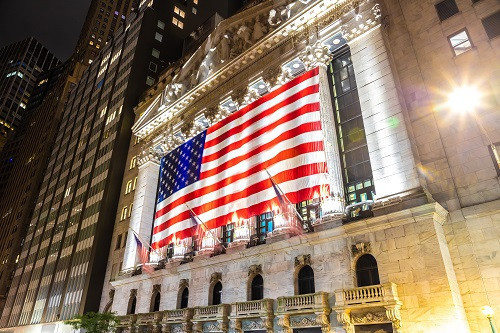(Photo by Spencer Platt/Getty Images)
Key Takeaways
- Banks investors have been on a wild ride, as the collapse of Silicon Valley Bank and Signature Bank caused a widespread selloff on Monday
- The drawdowns were particularly heavy in smaller regional banks, with investors and deposit holders rushing for exits to larger banks
- Tuesday saw somewhat of a turnaround, as many of these stocks bounced back
At the start of last week, our Slack channels were discussing the fact that the week before had been a quiet one in terms of financial news. Then in the space of a few days, two banks collapsed and it looked like more might follow.
Be careful what you wish for!
And while Silicon Valley Bank and Signature Bank are no more, the regulators have stepped in and ensured that depositors with those banks are going to be able to access their cash. That means that companies can make payroll and pay suppliers, in the aftermath of an event that had some concerned about potential contagion into the wider banking system.
Even after the safety measures announced by the Federal Reserve and the FDIC, trading on Monday saw stock prices sink across the banking sector. Regional banks were the worst hit, with First Republic Bank down 61.83% and Western Alliance Bancorp down 47.06%, and big banks like Bank of America (-5.85%) and Wells Fargo (-7.13%) not immune from the volatility.
While investors in SVB have seen their stock go to zero, your portfolio doesn’t have to suffer the same fate. Q.ai’s Investment Kits use AI to analyze and predict performance across a wide range of stocks, ETFs, commodities, and other assets, automatically rebalancing them every week based on these predictions.
Not only that, but our Foundation Kits allow you to add Portfolio Protection, which harnesses the AI to assess your portfolio’s sensitivity to various forms of risk, and then automatically implements sophisticated hedging strategies to protect against them.
Download Q.ai today for access to AI-powered investment strategies.
Why are banks collapsing?
The issues with Silicon Valley Bank (SVB) and Signature Bank can be chalked up to a liquidity crunch. SVB has been the bank of choice for startups and their founders, while Signature Bank pivoted in recent years to become heavily involved in providing banking services to crypto companies.
As you can expect, this means that the client base for these banks has needed access to cash. With the tech sector experiencing mass layoffs and cost cutting, and crypto in an even worse position, money was flowing out quickly and flowing in much slower.
This becomes a problem for any bank, because the way the banking system works is through a process called fractional reserve banking. It means that banks don’t have access to all of their deposits at any given time.
The way they generate profits is by lending this money out or investing it.
In the case of SVB, these funds were invested into long term mortgage backed securities. These investments themselves are high quality, but they were purchased at a time when rates were at historic lows.
Bond prices move inversely to rates, which means that when rates go up, bond prices go down.
It’s important to understand how this works.
Say SVB bought $10 billion worth of 10-year mortgage bonds at 1.5%. At the same time, let’s say that the 10-year U.S. Treasury rate is 0.25%. This means that mortgage backed securities are paying a margin of 1.25% above the Treasury rate, because while mortgages are pretty safe, they’re not as safe as the U.S. government.
Now say that the Fed hikes rates over the next 12 months, and SVB can now purchase a 10-year U.S. Treasury with a 2% yield.
Imagine now that SVB wanted to sell their mortgage bonds. Why would someone buy them for $10 billion for a 1.5% yield, when they could buy a safer investment (U.S. Treasuries) with the same yield?
Of course, they wouldn’t.
So in order for SVB to sell their bonds, you would need to sell them at a price that keeps that margin above the U.S. Treasuries at 1.25%. It means that these mortgage bonds would have a market value of $4.61 billion in order to give the investor a yield of 3.25%.
For SVB, that means they’re sitting on a big paper loss. And this is exactly what happened, but on an even larger scale.
The thing to keep in mind is that these bondholders will receive their capital back at the end of the term, So if SVB could have held their assets for the long term, they would have continued to receive their interest and would have eventually received all their investment back.
The bank run meant they didn’t have that luxury.
What’s happening to bank stocks?
It’s been an absolute rollercoaster. Late last week and Monday saw massive falls across the board, but particularly in smaller regional banks similar in size to SVB and Signature Bank.
Investors and deposit holders jumped ship to bigger banks, worried about the stability of smaller players like First Republic Bank (-61.83%), Western Alliance Bancorp (-47.06%) and Zion Bancorp (-25.72%).
Even big bank stocks pulled back as the concern over the fallout of the bank failures drove sell side pressure. JPMorgan Chase finished Monday down 1.8%, Bank of America fell 5.81%, Wells Fargo pulled back 7.13% and Citi was down 7.47%.
But Tuesday saw a big turnaround as traders swooped in to pick up cheap stock, confident that the regulator’s new measures would keep the banking sector stable and secure.
The biggest losers from Monday became some of the biggest winners on Tuesday.
First Republic Bank was up 26.98%, while Western Alliance Bank closed up 14.98%. But not all banks finished the day in the green. Zion Bancorp finished down 3.34% despite opening trading up 21.65% at market open and Comerica was up 5% early afternoon before finishing down 0.81%.
The likelihood is that we’ll continue to see volatility play out over the rest of the week. Depending on whether any new information comes to light around SVB or whether any other banks come under pressure, it could last significantly longer than that.
It’s been reported today that credit rating agency Moody’s has placed U.S. banks under review, given the high levels of uncertainty around the sector.
The bottom line
For investors, this could mean a challenging environment persists. No one wants to be on the wrong end of a banking stock that plummets double digits in a single day. For investors, the key way to manage this risk is through diversification.
And that’s not just diversification between banks, but between sectors, countries and asset classes as well.
This means that whether it’s a banking crisis, a microchip shortage, a tech crash or supermarket supply chain problems, your portfolio won’t be heavily affected by any single issue or problem.
And if you really want to supercharge the management of your portfolio, AI could be your new secret weapon. At Q.ai, our AI-powered Investment Kits provide substantial diversification for everyday investors.
Take our Value Vault Kit, for example, which uses AI to analyze a wide range of investments to find companies that are undervalued with strong balance sheets and cash flow. It’s value investing, along the lines of the famous Warren Buffet, with a modern AI edge.
Download Q.ai today for access to AI-powered investment strategies.






